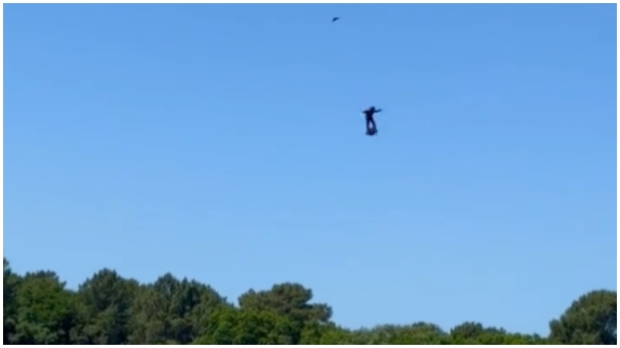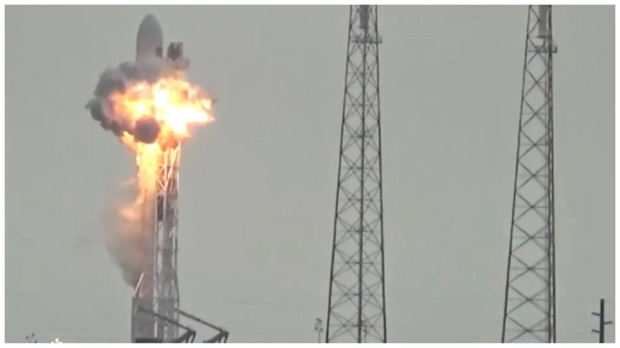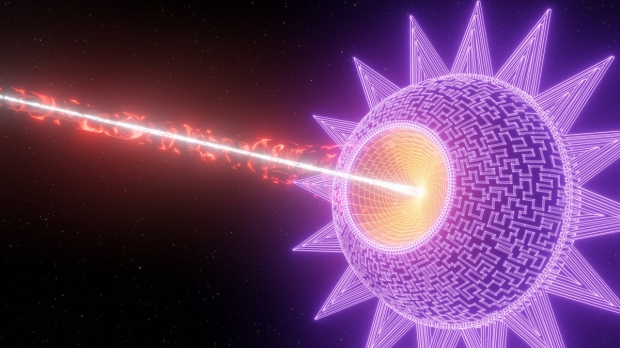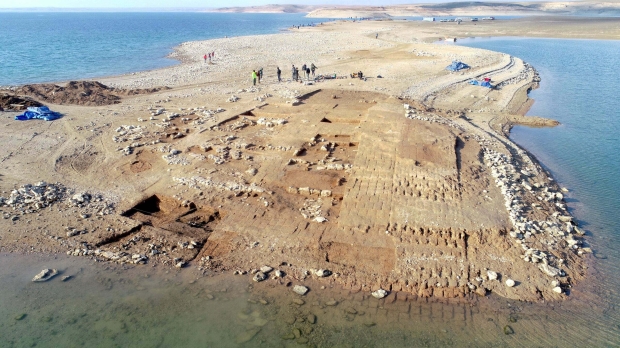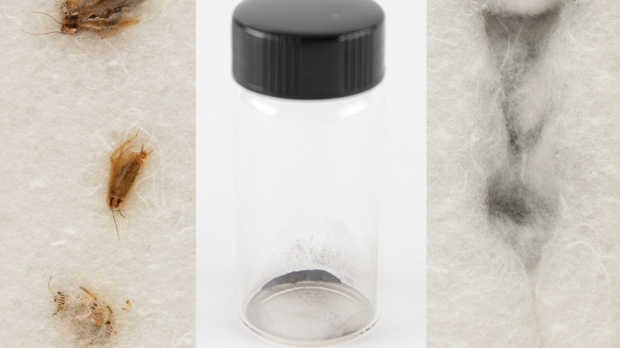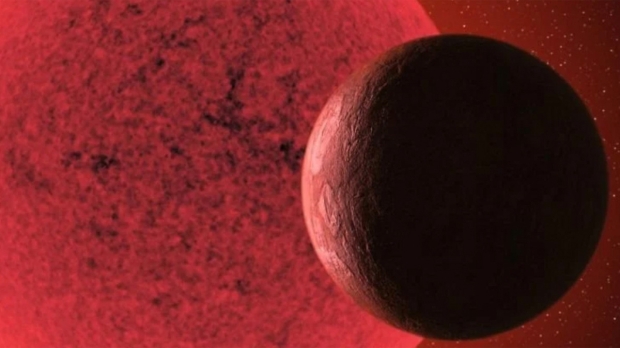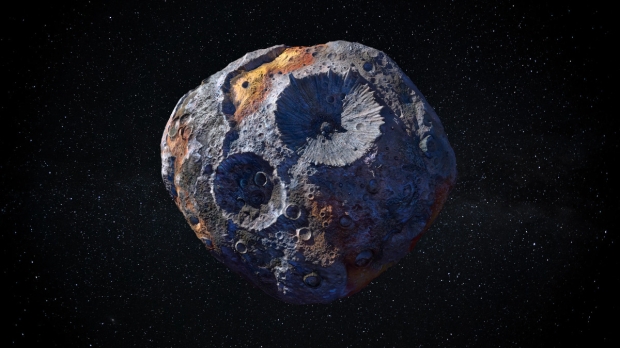Science, Space, Health & Robotics News - Page 137
Jetpack inventor filmed suffering a horror crash falling 50 feet
The French inventor of the jetpack has unfortunately suffered from a horrible crash landing after falling 50 feet during a demonstration.
French inventor Franky Zapata was demonstrating a new jet-powered hoverboard when the demonstration took a turn for the worst as Zapata lost control of the device and began to climb in altitude while spinning uncontrollably. The crash occurred over a Lake Biscarosse, located on the west coast of France, and according to reports from BBC, Zapata is alive and recovering from the fall in hospital.
The event was captured by onlookers and was quickly posted to Twitter, where the video/s gained traction. Above, you can see Zapata flying what seems to be Zapata's company's "Flyboard Air", a device capable of reaching speeds of 87 mph, and, according to the company's website, "this machine can lose one engine and still fly. If it loses two engines, the pilot will perform a controlled landing."
Continue reading: Jetpack inventor filmed suffering a horror crash falling 50 feet (full post)
Someone attempted to sabotage China's astronaut launch with a device
Reports indicate that a device has been found at a Chinese space launch that is used to jam communication signals.
The Chinese newspaper named Beijing Daily has reported that researchers from the Jiuquan Satellite Launch Center located in the Gobi Desert, Inner Mongolia, have found a strange device that was causing "abnormal" interference with communications. Researchers at the launch site detected the communications interference and began looking for the device, which turned out to be a rather small frequency transmitter that only had a range of about 32 feet.
The size of the device and the proximity of the frequency it transmitted have caused researchers and authorities to speculate if the device was placed there intentionally in an attempt to sabotage China's upcoming launch where the space agency will send three astronauts to its newly constructed space station. However, authorities have yet to confirm if the device's placement was intentional or how it arrived where it was found. Furthermore, China's space agency has stated that it will go ahead with the launch.
Continue reading: Someone attempted to sabotage China's astronaut launch with a device (full post)
New carbon capture system has 99% efficiency, and is twice as fast
A study on the new carbon capture method titled "Direct Air Capture of CO2 Using a Liquid Amine-Solid Carbamic Acid Phase-Separation System Using Diamines Bearing an Aminocyclohexyl Group" has been published in the journal ACS Environmental Au.
Researchers from the Tokyo Metropolitan University have developed a new direct air capture (DAC) system for removing carbon dioxide (CO2) from the atmosphere. The system passes atmospheric air with relatively low concentrations of CO2 through an aqueous solution of isophorone diamine (IPDA), causing the carbon dioxide to react rapidly and create a solid product.
The solution can also be mildly heated to release the CO2, allowing it to be collected and concentrated for storage or other applications. Heating the system to release the CO2 enables it to be reused to capture more CO2. The IPDA solution can capture 99% of the CO2 in air and turn it into a solid carbamic acid precipitate.
Continue reading: New carbon capture system has 99% efficiency, and is twice as fast (full post)
The Milky Way may have four 'malicious extraterrestrial civilizations'
A paper discussing potential alien civilizations titled "Estimating the prevalence of malicious extraterrestrial civilizations" has been uploaded to the pre-print server arXiv.
The paper is a thought experiment written by Alberto Caballero from the University of Vigo in Spain, who authored a recent paper on the origin of the famous Wow! signal, published in the International Journal of Astrobiology. The paper estimates that in our galaxy, the Milky Way, there are potentially about four "malicious extraterrestrial civilizations."
Caballero used data on how many external invasions have occurred over the last 50 years on Earth, meaning when one country invades another. Extrapolating this data to a galactic scale and pairing it with the estimation of as many as 15,785 civilizations that may inhabit the Milky Way allowed Caballero to determine that about 4.42 alien civilizations could be malevolent towards us. However, only 0.22 civilizations are capable of interstellar travel.
Continue reading: The Milky Way may have four 'malicious extraterrestrial civilizations' (full post)
3,400-year-old city from ancient empire revealed as river level drops
Iraq is one of the most climate-change-affected countries globally, suffering from extreme droughts for months and dropping water levels in the region.
The recently emerged settlement dates back to the Bronze Age and is a 3,400-year-old city once located along the Tigris River. Water levels of the Mosul reservoir have dropped enough to reveal the city, which is believed to have been an important settlement in the Mitanni Empire between approximately 1550 BC and 1350 BC.
Since December, water has been diverted from the Mosul reservoir to preserve crops suffering during the drought. Now, archaeologists are tasked with excavating and documenting as much of the city as possible before the water levels rise and submerge it once more.
Continue reading: 3,400-year-old city from ancient empire revealed as river level drops (full post)
China just found a massive uranium deposit, increasing their stock 10x
The new discovery increases China's estimated total uranium reserve to two million tonnes, an amount close to that of Australia, one of the world's most uranium-rich countries.
The China National Nuclear Corporation (CNNC) found the industrial-grade uranium deposits at a depth of 3,000 meters (9843 feet), about six times deeper than most of the country's uranium mines. The majority of the country's uranium mines are typically small and have poorer ore quality, and the new mine makes a "major breakthrough" according to the CNNC.
Over 70 percent of China's uranium supply comes from other countries like Kazakhstan, Canada, and Australia, which China uses to expand its nuclear power supply rapidly. China builds about seven to eight new reactors each year, meaning its nuclear power supply is growing faster than any other country's.
Continue reading: China just found a massive uranium deposit, increasing their stock 10x (full post)
You can now bid on this Apollo 11 moon dust eaten by cockroaches
The moon dust was collected by Apollo 11 astronauts Neil Armstrong and Buzz Aldrin from the moon in 1969.
Scientists at the time didn't know as much about the moon as we do now and were therefore concerned about the possibility of the astronauts bringing home some form of life that could threaten life on Earth. Thus, the crew, their spacecraft, and everything else that returned from the moon to Earth were quarantined for 21 days.
The Apollo 11 mission brought back 47.5 pounds (21.5 kilograms) of lunar rocks and dust to Earth. About ten percent of the matter was allocated for tests involving exposing animals to it to test how life on Earth might react to lunar material, including fish, mice, cockroaches, and more.
Continue reading: You can now bid on this Apollo 11 moon dust eaten by cockroaches (full post)
'Super-Earth' exoplanet found in a nearby star's habitable zone
A study on the Super-Earth titled "A Super-Earth Orbiting Near the Inner Edge of the Habitable Zone around the M4.5-dwarf Ross 508" has been accepted for publication in the journal Publications of the Astronomical Society of Japan.
Ross 508 is a faint red dwarf star located only 36.5 light-years from Earth. Astronomers have now found an exoplanet, named Ross 508 b, orbiting the star with a mass four times that of Earth's. The planet exists in the 'habitable zone' of its host star, where the temperature allows for the formation of liquid water on a planet's surface.
However, the habitable zone is not the only factor determining a planet's ability to support life as we know it. For instance, Mars falls within our Sun's habitable zone but cannot readily sustain life. Ross 508 b is likely to be terrestrial instead of a gas giant, given astronomer's understanding of planetary masses.
Continue reading: 'Super-Earth' exoplanet found in a nearby star's habitable zone (full post)
Asteroid-mining startup books its first mission, launching with SpaceX
Astroforge has received $13 million in funding after a new seed funding round led by Initialized Capital.
The Y Combinator asteroid-mining startup is based out of California, and was only founded in January 2022 with the only goal of taking "asteroid mining out of the realm of sci-fi into the realm of reality," according to AstroForge cofounder and CEO Matt Gialich.
The $13 million in funding secured will finance Astroforge's first two missions, the first of which will be a demonstration flight currently booked for a rideshare mission about a SpaceX Falcon 9 next year. Astroforge has also partnered with OrbAstro to create the first satellite for its initial demonstration flight and already has its eye on a collection of candidate asteroids to visit.
Continue reading: Asteroid-mining startup books its first mission, launching with SpaceX (full post)
First-ever 'crypto satellite' launched into orbit by SpaceX
May 25th saw the launch of the SpaceX's Transporter-5 mission from Space Launch Complex 40 at Cape Canaveral Space Force Station (CCSFS), at 18:35 GMT.
The first stage of the Falcon 9 used in the mission returned to land intact after delivering the Crypto-1 satellite to low Earth orbit (LEO) for Cryptosat, a U.S. satellite startup. The satellite is about the size of a coffee mug, assembled with readily available parts, and was launched alongside 58 other spacecraft, including "CubeSats, microsats, non-deploying hosted payloads, and orbital transfer vehicles."
Up in orbit, the satellite is unreachable by bad actors to tamper with, but also more difficult to work with in case something goes wrong compared to something on Earth where "you just open a terminal and debug it," as noted by Cryptosat's co-founder Yan Michalevsky. Crypto-1 will enable secure cryptography for the blockchain in space and potentially facilitate the deployment of an entire space-based blockchain.
Continue reading: First-ever 'crypto satellite' launched into orbit by SpaceX (full post)


